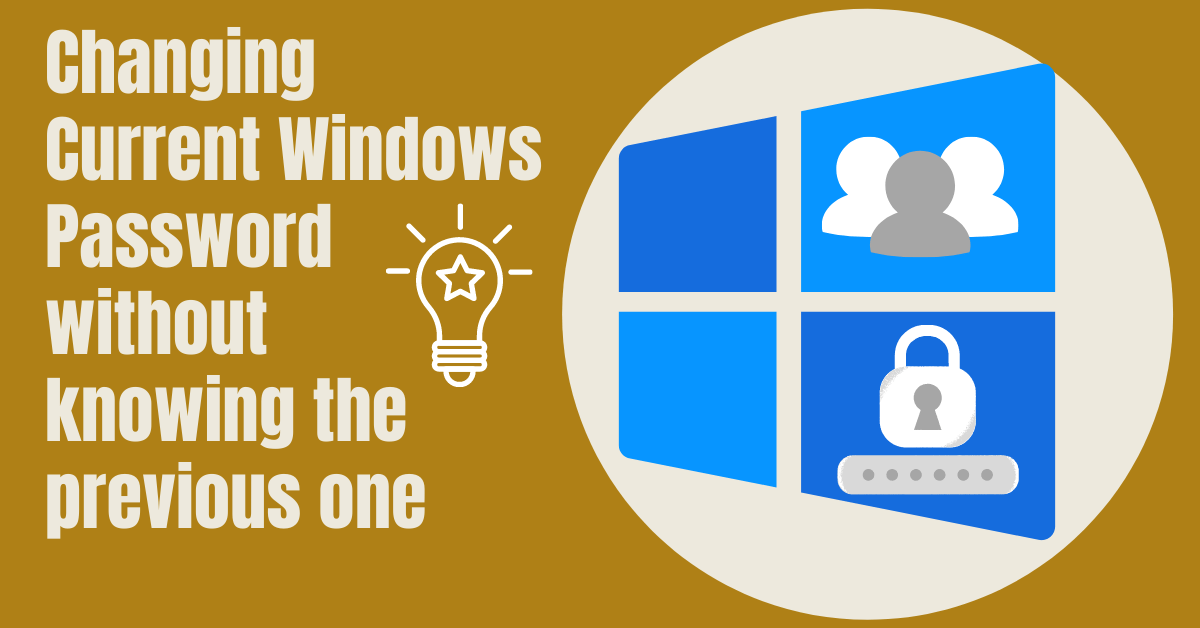Simple and easy tricks to change windows user password in windows .Changing current Windows password without knowing the previous one.
- Click on the Start Menu.
- Right click on the My Computer icon.

- Click on Manage.
- Click on System Tools.

- Click on Local Users and Groups

- Then click on Users. You will see all the registered users in that computer now.

- Right-click on any one of the accounts and click on ‘Set Password’.

- Type the new password and click on OK.

Changing Current Windows Password: A Comprehensive Guide
In today’s digital age, securing your personal information is of utmost importance. One of the primary ways to safeguard your data is by changing your Windows password regularly.
In this comprehensive guide, we will walk you through the process of changing your current Windows password effectively, ensuring your data remains protected.
Whether you’re a tech-savvy individual or a novice user, this article covers all the essential steps to help you change Windows user password securely.
Changing Current Windows Password: A Comprehensive Guide
Changing your Windows password is a simple yet crucial task to enhance your cybersecurity. Follow these step-by-step instructions to ensure a seamless password-changing process:
Step 1: Accessing the Password Settings
To begin the password-changing process, follow these steps:
- Press Ctrl + Alt + Delete simultaneously.
- Click on “Change a password” from the options menu.
Step 2: Verifying Current Password
Windows will prompt you to enter your current password for verification. Once entered correctly, proceed to the next step.
Step 3: Creating a Strong New Password
LSI Keywords: Password security, Secure password, Strong password
It’s essential to create a strong and secure password to protect your account from potential breaches. Follow these guidelines to craft an unbreakable password:
- Use a combination of uppercase and lowercase letters.
- Include numbers and special characters.
- Avoid common words or easily guessable information (e.g., birthdates, pet names).
- Ensure it is at least 12 characters long.
Step 4: Changing the Password
Now, enter your new password and retype it for confirmation. Make sure you remember the new password or store it securely using a reliable password manager.
Step 5: Setting up Password Hints (Optional)
Adding password hints can be helpful if you tend to forget your password. However, be cautious not to make it too obvious for security reasons.
Step 6: Completing the Process
Once you’ve completed all the steps, click on “Change Password” to finalize the process. Congratulations! You have successfully changed your Windows password.
Tips for a Secure Password Change
To ensure maximum security while changing your Windows password, keep these additional tips in mind:
Regular Password Updates: Change your password at least every three months to reduce the risk of unauthorized access.
Avoid Password Sharing: Never share your password with anyone, even if they claim to be from tech support or a legitimate source.
Two-Factor Authentication (2FA): Enable 2FA for an added layer of security. This requires you to enter a verification code from your mobile device when signing in.
Phishing Awareness: Be cautious of suspicious emails or links that may lead to phishing websites designed to steal your login credentials.
Secure Wi-Fi Networks: Change your password on trusted and secure Wi-Fi networks to prevent potential interception.
Conclusion
Changing current Windows password is an essential step in safeguarding your personal information and maintaining digital security.
By following this comprehensive guide, you can confidently update your password, creating a strong defense against potential threats.
Remember to implement additional security measures like enabling two-factor authentication and staying vigilant against phishing attempts.
Protecting your accounts is a responsibility we all share, and with the right knowledge and practices, we can make the digital world a safer place.
Frequently Asked Questions (FAQs)
Q: Can I change my Windows password from the login screen?
Yes, you can change your Windows password from the login screen by clicking on the “Reset Password” option.
Q: What should I do if I forget my new password?
If you forget your new password, you can reset it by using your recovery email or phone number associated with your Windows account.
Q: Is there a limit to how many times I can change my Windows password?
There is no specific limit on how many times you can change your Windows password. However, frequent changes are not recommended, as it might lead to password fatigue.
Q: Can I use the same password again after changing it?
While you can reuse a previously used password, it is advisable to create a new and unique password to enhance security.
Q: Can I change my password if I’m not connected to the internet?
Yes, you can change your password without an internet connection by using the local user account settings.
Q: Can I use a passphrase instead of a password?
Absolutely! Using a passphrase with a combination of words, numbers, and special characters can be an excellent alternative to a traditional password.
Related
Discover more from ArhamTechMind
Subscribe to get the latest posts sent to your email.


